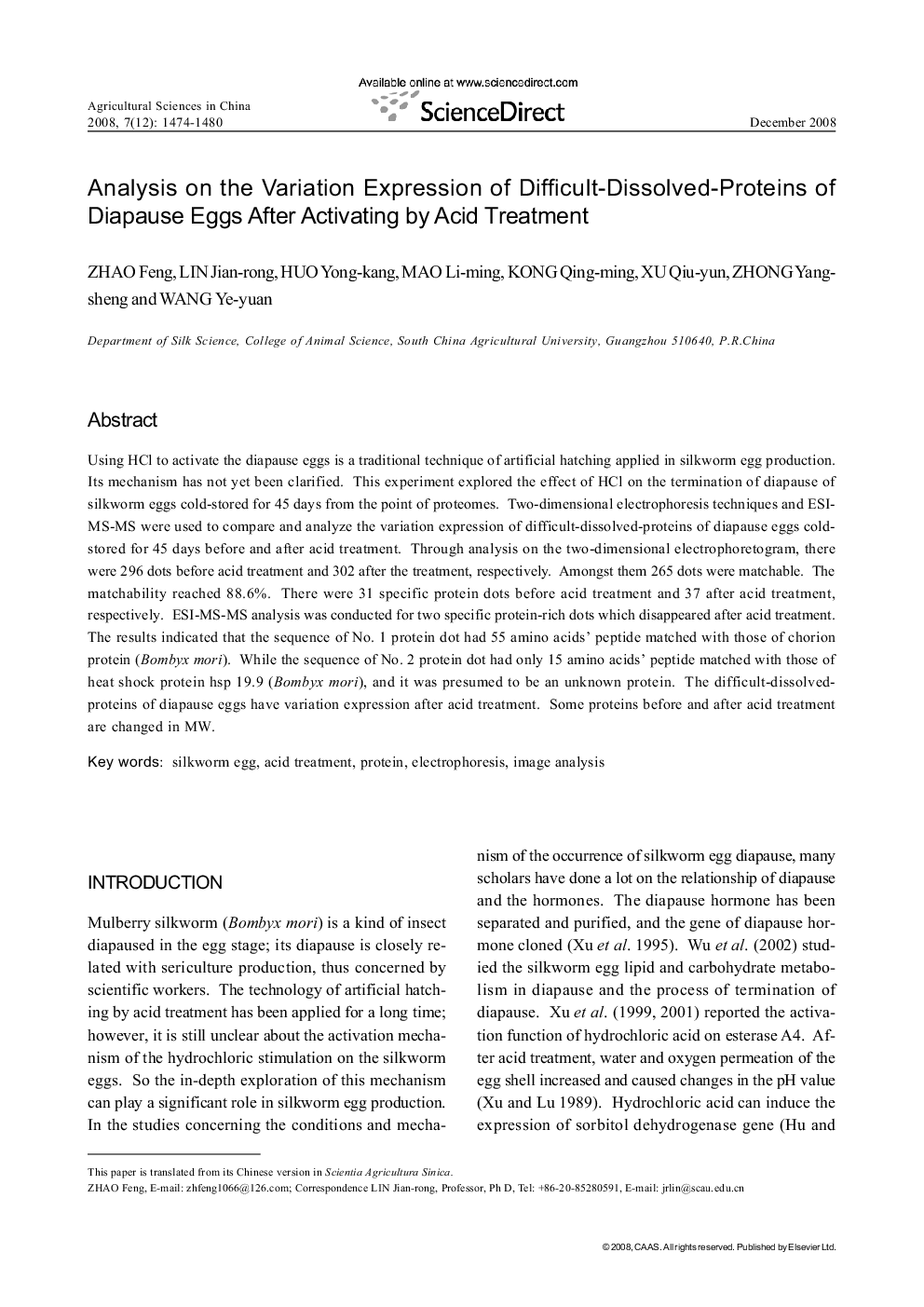| کد مقاله | کد نشریه | سال انتشار | مقاله انگلیسی | نسخه تمام متن |
|---|---|---|---|---|
| 4490508 | 1623192 | 2008 | 7 صفحه PDF | دانلود رایگان |

Using HCl to activate the diapause eggs is a traditional technique of artificial hatching applied in silkworm egg production. Its mechanism has not yet been clarified. This experiment explored the effect of HCl on the termination of diapause of silkworm eggs cold-stored for 45 days from the point of proteomes. Two-dimensional electrophoresis techniques and ESIMS-MS were used to compare and analyze the variation expression of difficult-dissolved-proteins of diapause eggs coldstored for 45 days before and after acid treatment. Through analysis on the two-dimensional electrophoretogram, there were 296 dots before acid treatment and 302 after the treatment, respectively. Amongst them 265 dots were matchable. The matchability reached 88.6%. There were 31 specific protein dots before acid treatment and 37 after acid treatment, respectively. ESI-MS-MS analysis was conducted for two specific protein-rich dots which disappeared after acid treatment. The results indicated that the sequence of No. 1 protein dot had 55 amino acids' peptide matched with those of chorion protein (Bombyx mori). While the sequence of No. 2 protein dot had only 15 amino acids' peptide matched with those of heat shock protein hsp 19.9 (Bombyx mori), and it was presumed to be an unknown protein. The difficult-dissolvedproteins of diapause eggs have variation expression after acid treatment. Some proteins before and after acid treatment are changed in MW.
Journal: Agricultural Sciences in China - Volume 7, Issue 12, December 2008, Pages 1474-1480